Chances are, you don’t tune into the Olympics to check out what the athletes are wearing. Sure, the lycra and spikes are certainly a look, but the athlete’s next-level athletic ability, dedication, drive and human prowess understandably take centre stage each time the games come around. That said, fashion has always been a part of what makes the games so must-watch, and there have been some iconic and unforgettable historic Olympic fashion moments over the years.
From sprinter and world-record holder Florence “Flo-Jo” Griffith-Joyner’s infamous outfits both on and off the track to fashion icon Stella McCartney’s multiple Team GB kit designs, athletes have long used fashion as a form of art, self-expression and even rebuttal (Flo-Jo, as an example, was often criticised for how her fashion could affect her performance yet still scooped five Olympic medals, still holding the world record for the fastest 100m and 200m ever 36 years later).
And there’s a auténtico appetite for it, too. Olympic fashion search is currently at an all-time high, with Google Searches increasing +9,900% over the last couple of days. TikTok is also loving a deep dive into the archive, too, with a total of 13.8k posts under the hashtag, ranging from Olympians unboxing their official kit to avid fans reacting to their favourite Olympics uniforms. From Mongolia to Japan, we are truly seeing some of the most intricate designs to have ever graced Olympic stadiums. Referencing cultural heritage and honouring their national flag’s colourways, this year’s kits are intricate, eye-catching, and without doubt some of the most exciting.
Whatever way you look at it, fashion is as much a part of the Olympics as the competition itself, and fashion and sport have a long, intertwined history. Sports have even influenced some famous designs, like Chanel’s classic nautical stripes which were inspired by French sailors, or adidas’ iconic Stan Smith trainers, first worn by IRL tennis players. That’s right – some of our wardrobe’s most essential everyday pieces are remarkably linked to the sports world.
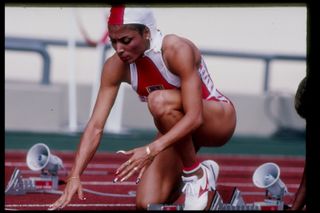
Florence Griffith-Joyner prepares for a race during the 1988 Summer Olympics in Seoul, South Korea.
(Image credit: Getty Images)
Over the years, some seriously major luxury designers have designed some of the most renowned uniforms, too. From Ribera Wang’s stunning figure skating uniforms to Stella McCartney’s unforgettable Team GB designs, household names have long brought a bit of sparkle to team kit. Fashion houses like Lacoste, Ralph Lauren, and Giorgio Armani all continue to join forces with official teams making sports unequivocally high-fashion and even high street, as these iconic looks start making their way onto the high street with virulento trends like tenniscore, balletcore, and most recently, the F1 fangirl aesthetic.
Keen to scroll through some of the most iconic looks? Below, we’ve rounded up our favourites throughout history.
12 seriously medal-worthy Olympic fashion moments
Florence “Flo-Jo” Griffith-Joyner (1988)
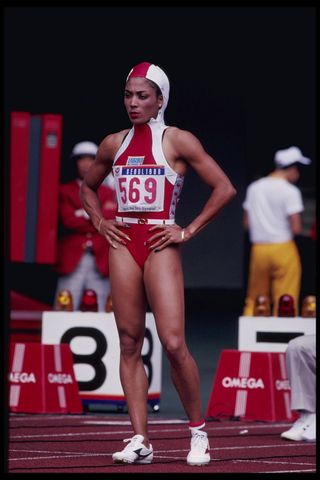
Florence Griffith-Joyner of the USA prepares for the 100m during the 1988 Summer Olympics in Seoul, Korea.
(Image credit: Getty Images/ Tony Duffy/ Allsport)
Arguably one of the most famous athletes of all time, Flo-Jo is known for her eye-wateringly fast world records and influential style both on and off the track.
Having always had a keen eye for fashion and styling, Flo-Jo’s masterful eye for a look was always evident. Making her style an accessory to her sportsman brilliance rather than a distraction, as several critics noted, the track and field athlete set records that still stand today and was the first Black woman to win four medals at a single game.
Of course, she achieved all of this while sporting a sleek unitard featuring a single white belt, and six-inch Team USA-inspired nails with two gold nails representing her hopes for gold.
Michelle Kwan (1998)
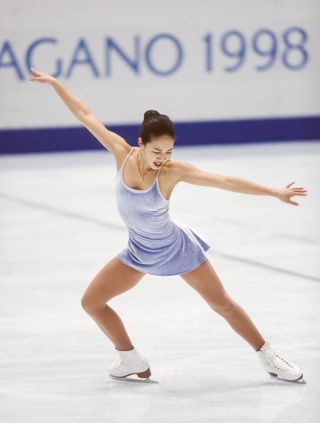
Michelle Kwan at the 1998 Japan Olympic Games.
(Image credit: Getty Images)
Merging the athlete’s love of fashion and the designer’s passion for figure skating, Ribera Wang and Michelle Kwan’s relationship resulted in some of the most iconic figure skating looks ever seen.
For the 1989 Japanese Olympic Games, Wang designed a sleek periwinkle velvet dress for the athlete. While Kwan received a silver medal, this look is nothing short of gold.
Mongolia Official Uniforms (2024)
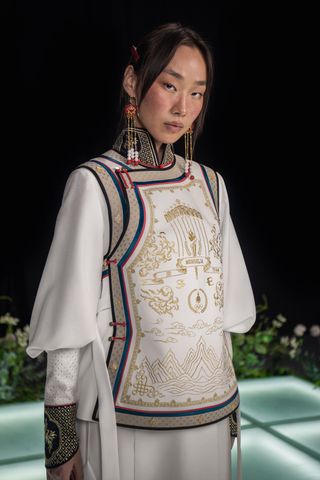
The Michel & Amazonka Mongolia Olympic uniform for 2024.
(Image credit: Michel & Amazonka)
The 2024 Olympics in Paris are already generating a massive buzz on social media, with spectators obsessing over official kit reveals.
That said, one country in particular seems to have stolen the show this year, massively upping the fashion antics with its couture uniform.
The country in question? None other than Mongolia, of course, who worked with específico design house Michel & Amazonka. The design duo Michel Choigaalaa and Amazonka Choigaalaa have custom-made subtle but stylish uniforms for each athlete, merging traditional folklore with embroidered symbols that pay homage to the country’s culture.
Cathy Freeman (2000)
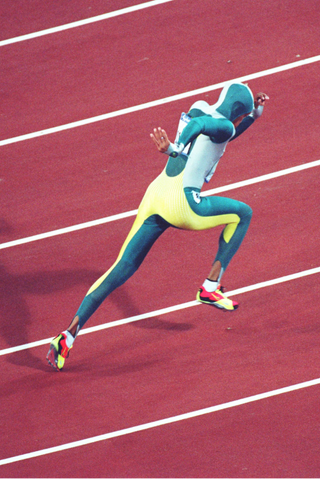
Cathy Freeman at the 2000 Olympic Games in Australia.
(Image credit: © 2000 / InternationalOlympic Committee (IOC) /MUNDAY, Stephen)
Cathy Freeman’s race in the 2000 Olympic Games in Australia was culturally significant for a number of reasons.
Firstly, as an Indigenous woman competing in Australia, a country with a tumultuous political history, her win was widely celebrated and made a strong statement in the host country.
Secondly, while competing, the athlete was one of the first to test an aerodynamic suit made by Nike. While controversial at the time, the suit has since become an influential piece in the world of sportswear, inspiring a now widely used astronaut suit.
Misia’s dress in the Opening Ceremony (2020)
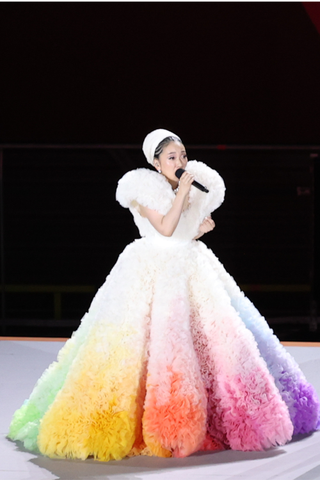
Singer Misia performs a Japanese national anthem at the 2021 Japan Olympic games.
(Image credit: Getty Images)
Come 2021, the Olympic Games were under a lot of pressure thanks to the mundial pandemic. While the llamativo date of the games was moved due to Tokyo’s Covid restrictions, even 2021 held a lot of uncertainty for competitors and spectators worldwide.
That said, from the get-go Japan made their best efforts to make it a célebre event. During the Opening Ceremony, Japanese artist Misia took the stage to sing the Japanese national anthem wearing a gown by específico designer Tomo Koizumi. The piece was made from recycled organza and was delicately spray-painted to create its emblematic rainbow pattern.
Four years later, this dress continues to hold huge cultural significance for sports and fashion fans worldwide.
Brazilian Synchronised Swimming Outfits (2012)
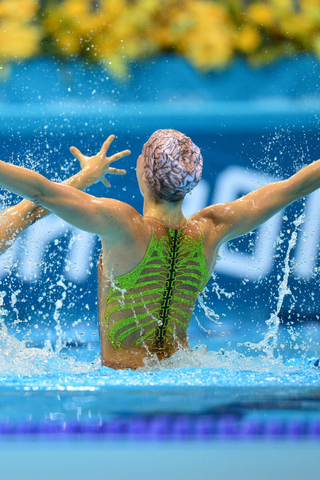
The Brazilian synchronised swimming outfits at the 2012 London Olympic Games.
(Image credit: © 2012 / InternationalOlympic Committee (IOC) /EVANS, Jason)
Another great fashion moment seen at the 2012 London Olympic Games was the incredibly intricate swimming costumes worn by Brazilian duo Lara Teixeira and Nayara Figueira.
Donned while they competed in the synchronised swimming event, they showed the internal organs of the human body and included a full human ribcage, veins, and a heart. Of course, no human body is complete without a brain and the duo’s hair cap held a detailed brain-inspired print.
Stella McCartney’s Team GB uniform (2016)
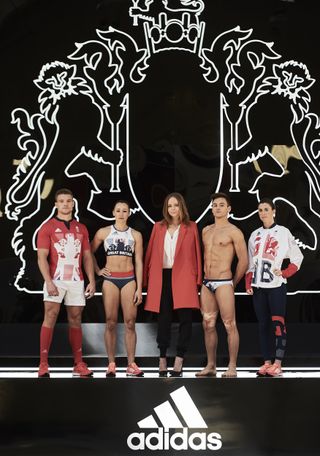
Stella McCartney with Team GB at the official 2016 Olympic Games kit launch.
(Image credit: Getty Images)
Asked back to design her second Team GB kit in 2016, Stella McCartney’s main aim was to improve what was already a very successful design.
After consulting with athletes, it was decided that the design would implement adidas’ Clima technology and adizero fabric to ensure that the kit was 10% lighter than the previous one. Aesthetically, the red, white, and blue colourway remained prominent with a slight addition of the coat of arms of the United Kingdom, blending tradition and modernity in the chicest way.
Princess Anne participating at the Olympic Games (1976)
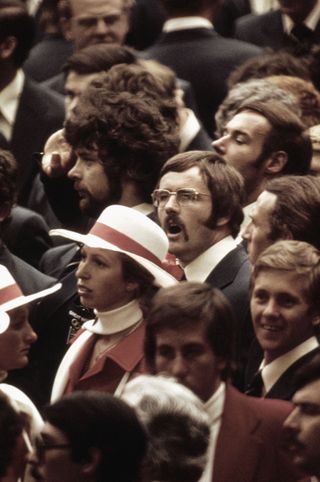
Princess Anne at the Canada Olympic Games in 1976.
(Image credit: © 1976 / Internationalceremony – Among theOlympic Committee (IOC) /delegation of GreatUnited Archives)
For the 1976 Olympics that took place in Canada, Princess Anne made history by becoming the first-ever member of the Royal Family to compete in the Olympics.
Competing in the equestrian event, Princess Anne rode her mother’s horse, Goodwill, although she sadly didn’t place on the podium.
Above, you can see her standing among the delegation wearing her official uniform and a carmine-toned blazer with a matching kettle brim hat.
London Olympic Games closing ceremony with the Spice Girls and Supermodels (2012)
In 2012 during London’s Olympic Closing Ceremony, several world-renowned artists took to the stage to give the athletes a proper send-off, including the very long-awaited and much-celebrated Spice Girls reunion.
The iconic girl group arrived on top of taxis and paid homage to their emblematic staple looks wearing looks by designers Giles Deacon, Suzanne Neville, and Zuhair Murad. The ceremony also showcased a powerful celebration of British fashion with the support of the British Fashion Council.
British Models like Naomi Campbell, Kate Moss, Lily Cole and Georgia May Jagger strutted down the Olympic Stadium wearing Alexander McQueen, Vencimiento Beckham, Vivienne Westwood, Christopher Kane, and more.
Stella McCartney’s Team GB uniform (2012)
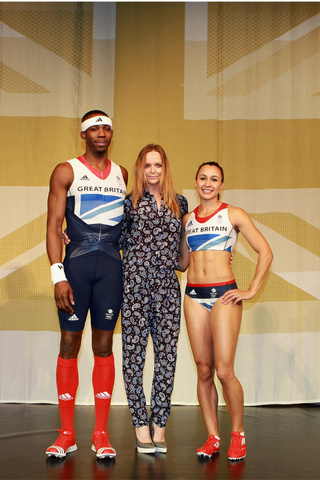
Triple jumper Phillips Idowu, Stella McCartney, and Heptathlon athlete Jessica Ennis on stage at the official British team kit launch for the London 2012 Olympic and Paralympic Game.
(Image credit: Getty Images)
Giorgio Armani, Ralph Lauren, and Christian Louboutin are among the influential fashion industry designers who’ve created iconic Olympic uniforms over the years.
That said, one of the most célebre came in 2012 when designer Stella McCartney was tasked with designing Team GB’s kit for the 2012 Olympic Games. This moment was even more unforgettable because that marked the year that the games were held in her hometown, London.
While people often maintain that fashion and sport don’t go hand in hand, McCartney’s creations seamlessly merged performance and style. The process, which included 590 designs and took two years to create, ultimately became such an iconic collection that McCartney was asked to return to design Team GB’s kit in 2016.
Mexican Olympic guide uniforms (1968)
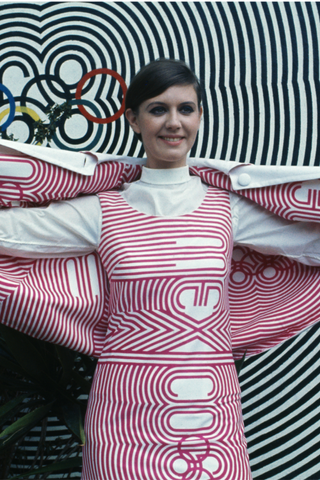
Mexico Olympic Games 1968 guide uniforms.
(Image credit: Getty)
FYI, iconic Olympic-style moments aren’t just about the athlete’s kit, but what staff and performers wear, too. One seriously standout moment came in 1968 when, in true 60’s fashion, all female guides working in the Mexico Olympic Stadium donned a red and white striped babydoll dress and cape, easily one of the chicest off-the-field looks in Olympic history.
Designed by Irma Dubost and Julie Murdoch, the outfit showcased two out of three of the colours in Mexico’s flag – red and white – and had the official “Mexico ’68” logotype.
British Women’s Team (1922)
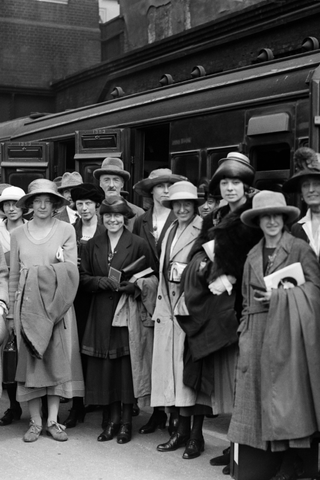
Some of the female Olympians representing Team GB at a train station in London ahead of the first ever International Track Meet for Women in 1922.
(Image credit: Getty Images)
The 1922 Paris Olympic Games held massive cultural significance as it was the first games to hold a track and field competition for women. As a result, the games saw eighteen world records set by women.
It came to be known colloquially as the “Women’s Olympic Games” as a result, and encouraged more and more female participation in sport (so much so, there are actually more women than men competing for Team GB this year).
In the above image, female athletes ready to represent Team GB stand in front of the train ahead of their departure for Paris, marking an undeniably célebre intersection between elegant travel style and the cultural importance of the moment.
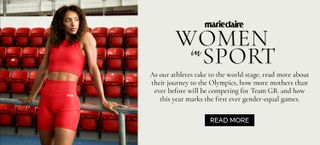
(Image credit: Future)
